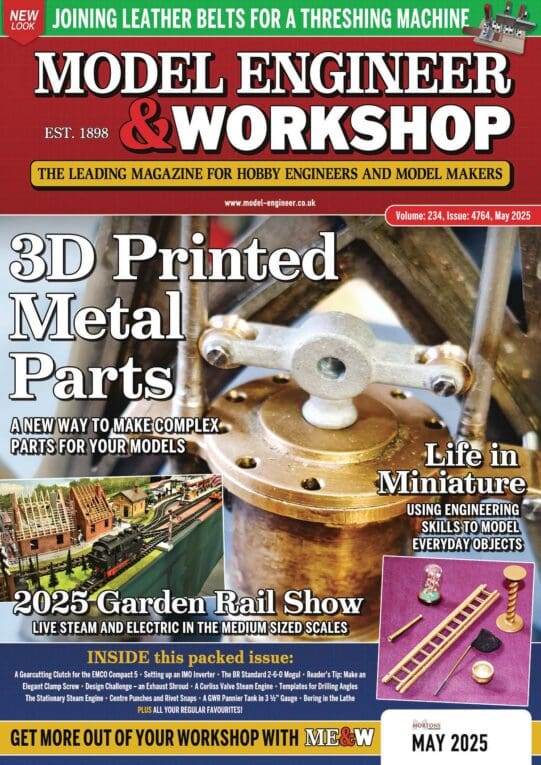Hi !
My £0.02….
Have had a read through here and a lot of knowledge and good ideas….
Banding and chatter obviously two different phenomena. Chatter is a resonance effect and in general increasing rigidity / support or slowing the surface speed or reducing the width of the cut, lubrication etc. can all improve things.
Banding is a different thing.
It’s most annoying and is present from totally invisible to “looks like a rat tail file” in every cut we make. The key cause is instability in the cut at the interface between the tool and the work. That instability ( it’s a LONG time since I studied the mechanics / physics of this ) is a factor of the cutting tool angles, tool material, work material, and lubrication. All of these have to be correct for a good cut. In addition as mentioned above, wear on a machine can also add to this by varying the ‘pressure’ of the tool onto the work causing a further avenue for instability of the cut. depending on the way in which the tool is cutting the degree of built up edge will vary and the degree of lubrication in how that BUE breaks off the tool is also slightly random in nature.
Ways to combat it.
Sharp tool at the correct angles for the material being cut.
Correct surface speed and depth of cut for the material.
Correct lubricant.
Taking up slack in the machine that may be allowing tool deflection.
Even choice of material. Some grades of steel are more challenging to machine if the set up is sub optimal, whereas some are easy in all conditions. Easiest being a free machining grade with a slight lead content i.e. 12L13 or 12L14.
We can also resort to increasing the radius of the tool, which puts the pressure over a wider area ( take care that it is not so much as to cause chatter ) and reduces the tool’s tendency to ‘dig’ more easily.
Carbide tools with chip breakers change that dynamic again.
And finally if power and rigidity are good, there are negative rake tools where the cut is not actually a cutting action but by plastic flow. This is often used in high volume manufacture and produces a very polished surface with an appearance of fine even rings. I only ever got into this zone once when a lump of EN36, impatience and a Colchester Triumph 2000 all came together. ‘Blue Chip’ manufacturing….
One can go down rabbit holes on this… 🙂
https://www.sciencedirect.com/science/article/abs/pii/S0020740319319472
https://iopscience.iop.org/article/10.1088/1757-899X/63/1/012016/pdf
All the best.
 Simon Collier.
Simon Collier.



